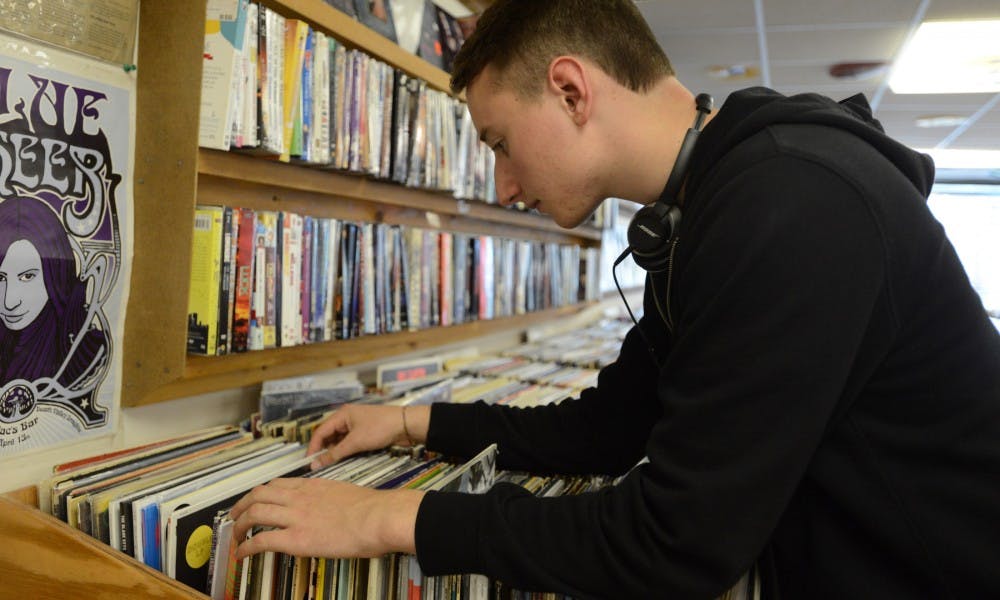There are two noticeable sounds which can be heard inside a record store.
The quiet flop of cardboard covers hitting each other as customers flip through vinyl and the soft crinkling sound from packaging being removed as people sample unique finds on the store’s public turntable.
It’s a sound familiar to Cameryn Shepich, a comparative cultures and politics senior, who has made it a weekly habit to visit East Lansing’s local vinyl shops.
“A lot of my friends got into it, so I picked up a record player for real cheap at a thrift store and my dad gave me some of his old records to start and after that I started making weekly pick-ups,” Shepich said.
Cameryn’s foray into record collecting comes on the heels of a larger trend in vinyl’s resurgence.
In 2014, vinyl sales surpassed nine million for the first time in more than 20 years, a 53 percent increase from the year prior. For the past four years, record purchases have steadily increased as digital and CD sales have decreased, signs of a consumer shift towards analog.
This upward swing in sales has been a boon for local record stores like Flat, Black & Circular (FBC). Marking off sales from his extensive inventory, Dave Bernath, owner and co-founder of FBC, said he is pleased with vinyl’s comeback.
“I’ve always believed that music should be a social, community thing and vinyl just makes it so much more personal than headphones or having your albums on a laptop,” Bernath said.
As to what he suspects are the reasons for the renewed interest, Bernath can only speculate on the impact “crate diggers” have had.
“By this point I’d say almost every album that’s been recorded has been found,” Bernath said. “People have combed the globe finding rare vinyls and searching through old crates to find lost albums or previously unheard of music. So with that, you know, there’s suddenly a bunch of vinyl for various niches. There’s a record for anyone if you know where to look.”
Knowing where to look is key, as the widening appeal of vinyl means more record stores and warehouses find the daunting task of organizing and categorizing the thousands of records on hand.
The internet helps in some respects, as nearly every discography or artist’s information can be found on sites such as last.fm, and most shop owners like Bernath are knowledgeable enough to point a new collector in the right direction.
Yet for those like alumni Andrew Meftah and John Shaughnessy, sometimes the best discoveries are made on the spot.
“You’re not gonna download some random thing, you’ll listen to some of it or know what you’re looking for, I think that’s a big difference (between vinyl and digital music),” Shaughnessy said. “I don’t have much but that Japanese jazz, that Shunzo Ohno, that’s something I never would have considered buying. I never would have thought to look that up and preview it. I just saw it and said, ‘this looks interesting.’”






